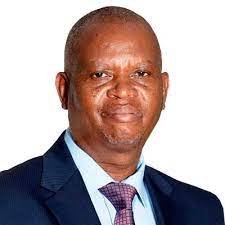Melinda Kusemachibi
The year 2019 remains a painful memory in the history of Zimbabwe after Cyclone Idai swept through Manicaland and parts of Masvingo province resulting in the death of many.
In 2014, many villagers in Zunga area of Chivi district of Masvingo were left homeless and were subsequently displaced to Chingwizi area after Tugwi-Mukosi dam flooded.
The situation at Chingwizi when the evacuation centre was established following the flooding of Zimbabwe’s biggest inland dam was so dire, with both government and donors having a hard time trying to meet the needs of the desperate villagers.
Tropical Storm Ana made a landfall in the last few days leaving a trail of destruction in some parts of the country, and before the country takes a sigh of relief, Cyclone Batsirai is bellowing in the Indian Ocean threatening to change lives for the worse in early February.
Questions have been raised on preparedness of government through Civil Protection Unit (CPU) to handle such natural disasters as in almost every occurrence of a natural disaster, the country has been caught off-guard, putting many lives at risk.
In the wake of the past disasters, the country may have learnt a thing or two in disaster preparedness, but huge gaps still remain.
The CPU in Masvingo recently said it is ready to combat disaster which might be caused by the spilling of Tugwi-Mukosi dam.
Masvingo Secretary for Provincial Affairs and Devolution Dr Jefter Sakupwanya said relaying of information to the target community is the only way to go for now to avert the likely problems to people living downstream Tugwi-Mukosi dam.
“We are sending warning so that people stop activities they were doing along river banks since the dam spilled,” said Dr Sakupwanya.
Chiredzi CPU chairperson, Lovemore Chisema said they have incorporated opinion leaders at Chilonga to help in the campaign to encourage people not to cross flooded rivers.
“We are doing campaigns to educate villagers to desist from crossing flooded rivers and we have also incorporated village elders and other opinion leaders at Chilonga Business Centre to help in campaigns. In case the dam burst, we will evacuate people but currently there are no people who live near rivers but carryout activities like gardening near river banks,” said Chisema.
A situational report by United Nations International Children’s Educational Fund (UNICEF) estimated that 270 000 people, including 129 600 children were affected by Cyclone Idai across the country.
Everyone has right to shelter, but to date, many people are still living in tents as evidenced by both the Chingwizi and Chimanimani situations. Survivors are experiencing the worst living conditions as they do not have enough resources for survival.
The United Methodist Church (UMC) intervened in the dire humanitarian situation by building proper houses for four Bikita families that have been living under deplorable conditions since March 2019 when Cyclone Idai hit their area.
Again, Save the Children invested over US$2 million for Cyclone Idai victims in Masvingo and Manicaland. This initiative is there to help and save affected children in the two provinces.
Women and children are often at the receiving end of the vulnerability posed by lack of preparedness in the face of disasters, with gender based violence, child marriages and teenage pregnancies being the direct result of this vulnerability.
Musasa Project Advocacy and communication officer Rotina Musara said emergency response systems to child marriages need to be deliberated in those areas after cases of child marriages rose due to children not going to school as a result of destruction of infrastructure.
“Cases of Gender Based Violence (GBV) and child marriages increased in emergency areas such as the cyclone Idai affected areas that are Chipinge and Chimanimani. Musasa in 2021 assisted 990 GBV survivors in those areas of which some were incidences of child marriages.
“It is important that emergency response systems to GBV be deliberate in those areas. Referral systems need to be strengthened while various institutions become important to ensure quality service provision.
“Musasa has been providing shelter services, counseling, medical support, transport assistance, legal support through the Zimbabwe Idai Recovery Project support by World Bank, United Nations Office for Project Service( UNOPS), United Nations Population Fund( UNPF),” said Musara.
A cyclone idai victim who resides in Chingwizi camp said they are living in tents and other makeshift structures which is difficult especially in rainy season.
As of March 21 2019, a total of 250 000 people were reported to have been affected by floods in nine districts. An estimated 48 percent of the affected population is under the age of 18.
What is worrying is that despite government reporting budget surplus, it seems to focus more on political programmes while relying on the benevolence of donors whenever a natural disaster strikes.
In earlier disasters, it is conceivable that schools could have been closed earlier and children sent home if the country had adequate information for example instruction to ‘move to higher ground’ should have been part of evacuation process.
The situation at St. Charles Lwanga High School, where 200 children, teachers and support staff were stranded for two days and left to face the cyclone three school children died.
The fact that Cyclone Idai struck at night made the situation worse, and with no adequate preparedness, Zimbabwe had no designated evacuation centers. Chimanimani Hotel led the way when it provided refuge to 200 families, a number that reached 500 over two months.
Poor infrastructure still rings at places where the cyclone happened and to date only few roads affected by Cyclone Idai are functioning, a situation likely to be worsened by the coming of more flooding associated with tropical storms and cyclones every rainy season.







